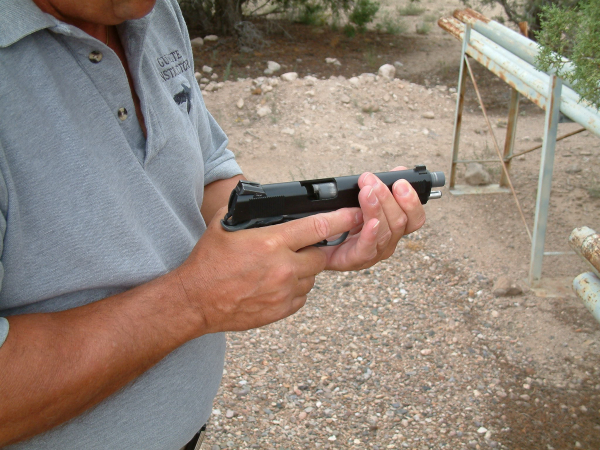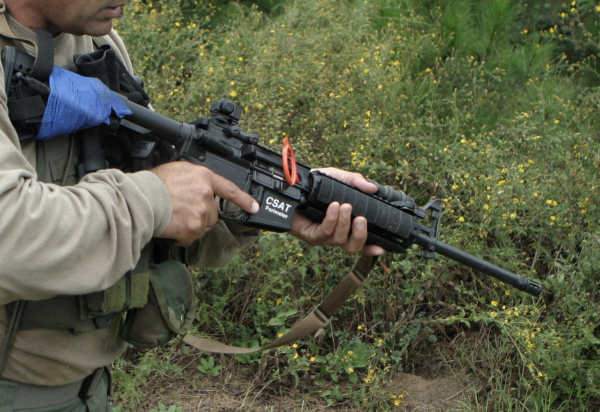Editor’s Note: A reprint from our first year of Tactical Wire features, this is an update.
An acquaintance that has trained as a medical examiner and done time as a coroner tells an interesting tale. It seems that, in his youth, he was completing his forensic medical education as an intern at a coroner’s office in south Florida. He was dispatched to a call while off-duty – a scene very close to his residence – to assist officers.
The home in question was populated by drug dealers. A pair of robbery perpetrators burst into the home in a “violent and tumultuous entry.” One of our robbers was armed with an HK G3, the other with a TEC-9. According to the victim-drug dealer, when he and his family went for their guns (a Beretta and a Browning, if it matters), the robbers attempted to fire. They both got a “click” instead of a “bang.” The drug dealers in residence shot the hapless pair to pieces before they could identify and clear their failures-to-fire.

In the moving pictures, if a magazine goes into a magazine well, the weapon is “loaded.” If the magazine is withdrawn, the gun is “empty.” Maybe our two schlemiels were Hollywood influenced. Perhaps they were simply candidates for the Darwin Award – people so stupid that precluding their reproduction provides a social service.
The question which arises periodically: “is the chamber check a range procedure or street smart?”
World class military & police trainer Clive Shepherd liked to keep things simple. In his world, he would load a magazine with one round, load the magazine into the weapon and rack it. When he removed the magazine, he’d look. If the round was still in the magazine, we have a problem.

That’s similar to the standard drill with AR-style rifles and carbines. While I was on a top-level prairie dog strafing safari, we found that some of our magazines would fail to feed the top round. I took to loading the magazine and noting if the top round was on the right or left side of the stack. If left, for example, I’d say “Left,” load, charge and remove the magazine. If the top round was now on the right, a round was in the chamber.

Our victim-offender with the G3 would have been well served by that protocol as would anyone who has solid reason to believe they are going into battle. Otherwise – with long guns -- it’s the reverse: I visually and physically ensure the chamber is clear, close (or close-and-flag) the chamber, put the loaded magazine under the verified empty chamber. A long gun tends not to be so forgiving of jarring impacts (like being dropped). While conventional pistols of the current era are and should be carried loaded up, long guns should not.
In the alternative, Clive would have students load magazines to full capacity. When they load, remove that magazine and try to put a round in it. There being no other place for the round to go, it would either (1) still be in the magazine, (2) be in the chamber, or (3) the Bullet Fairy took it.
With the carbine, I am a fan of the “right/left” plan. With the handgun, I’ll do the “loaded chamber verification” every time we make ready. “Make ready” is a ritual, done the same way every time, everywhere.
The ritual? Protect your eyes. Protect your ears. Face into a safe direction (i.e., where an unintended discharge could cause only minor property damage and NO personal injury.) Draw, check chamber, check magazine.
If the magazine is one down, do a good tactical load. A good tactical reload is one that is largely administrative in terms of when it’s done – in spite of its name. When everything is settled, load that “down one” magazine to capacity and stow it.
The loaded weapon verification is as much a safety procedure as unloading and showing clear. If you don’t believe that, ask the guys who try to rob drug dealers.
-- Rich Grassi